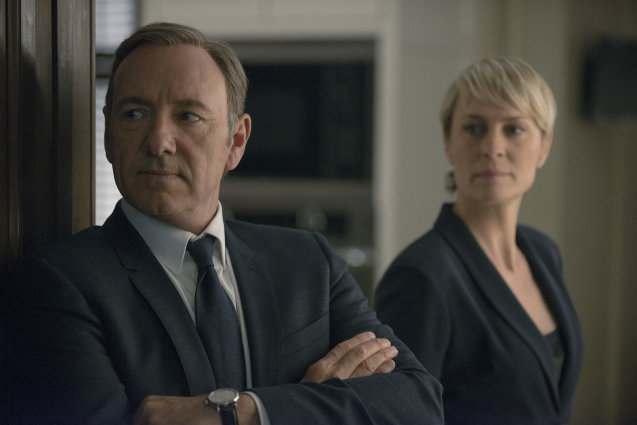 Netflix
Netflix
If we are living in the age of social media, then we are also living in the age of FOMO.
The four-letter acronym refers to the Fear of Missing Out, a term psychologists have used to describe the feelings of social anxiety that plague the majority of social media users. Essentially, FOMO occurs when George logs onto Facebook and sees all of the pictures that Sally posted of her wonderful birthday party, and then George becomes emotionally impacted because he wasn’t able to attend Sally’s party. FOMO is why some people can’t stop checking their cell phones, and why others always have their email open while on the computer. FOMO causes teenagers to text during a movie and mom and dad to take phone calls during dinner.
However, not all feelings of FOMO relate to social events per se. For example, FOMO can occur when “everyone” is talking about that latest television show or film that you haven’t seen. In this case, there isn’t a specific party or concert that is being missed. Instead, you’re missing out on the conversation, and in order to be socially included, you feel like you must watch the latest trending program.
It’s certainly important to engage in intelligent discussions about art, and there’s nothing more satisfying than watching a great film or television show. However, instant access to media content cannot disguise the fact that one individual cannot consume it all in one lifetime. To put it plainly: there are many great television shows and movies that you are missing, and there’s nothing that you can do about it. Media industries don’t want you to know this, however, and they have developed a number of techniques that tap into the technological climate and capitalize on FOMO. Below are five of them.
Different streaming services
Digital streaming services like Netflix, Hulu, Amazon, and Fandor are a cinephile’s dream. They offer instant access to a plethora of fantastic television shows and films, and you can watch them all from the comfort of your living room at an affordable subscription fee. However, each streaming service is competing with one another, and they entice consumers by offering exclusive “must-see” content. Netflix, for example, has AMC hits like Breaking Bad and Mad Men, as well as original programs like House of Cards and Orange is the New Black. Amazon, on the other hand, has Downton Abbey, Justified, and The Americans. These streaming services offer an array of different content to keep you subscribing, and just when you think you’ve watched everything, they recommend something else you’ve never heard of.
Awards shows
I love the Oscars as much as anyone else, but it’s important to remember that the many televised awards shows like the Oscars, the Golden Globes, and the Emmys exist to a sell product. In this case, the product is the latest film or television series that is considered award-worthy by these various groups. The many prizes bestowed upon certain films or television shows elevate them into something significant that must be seen. 12 Years a Slave, for example, is deemed an “important” film, and Hollywood gives it a bunch of awards to make you feel like you are missing out if you don’t see it.
Twitter marketing
In this new industry practice, certain companies incorporate user-generated tweets into their promotional materials. A trailer for Muppets Most Wanted, for example, tapped into the social media market by showing what Twitter users have said about the film. The marketing team does this to build anticipation, and the goal is to construct a narrative around Muppets Most Wanted that it is a trending topic that must be seen if you want to be included in the conversation.
Exciting the hashtag generation
Similar to the promotional practice described above, this refers to a more general attempt to excite the social media generation. Nearly every film and television show has a Twitter account and Facebook page, and certain ones will call for interactivity to engage the consumer. The Syfy movie Sharknado, for example, retweeted what fans and celebrities had to say about the program, thereby constructing a social phenomenon. The industry includes the audience in the conversation, and more people participate in the hope that their tweets, too, will gain exposure.
More content in a shorter timespan
According to A.O. Scott of The New York Times, nearly 900 movies were released in 2013. Add to this the 30 or so great television shows each year as well as the older movies and shows to catch up with, and you’re left with a bunch of content and so little time to watch it all. Therefore, a cycle is constructed in which you binge-watch everything in order to remain socially relevant, and just when you’ve finished the latest season of Game of Thrones, there’s Homeland waiting for you. You’ve finally watched the films of Quentin Tarantino, but then a friend mentions Martin Scorsese and you have to begin again.
Our media culture is at a point where companies are producing more content than we can possibly handle, and since we want to be in the know, we make an effort to see everything at once. At some point, though, the conversation becomes diluted, and we’re left with a society that brings up True Detective for the sake of bringing it up, without saying anything remotely interesting or intelligent about it.


